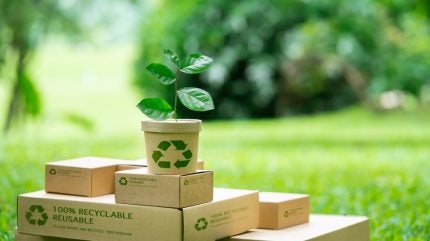
In a world increasingly focused on environmental responsibility, climate-smart packaging innovations have become a vital area of development. Packaging plays a significant role in the carbon footprint of consumer goods, from production and transportation to disposal.
As industries seek to reduce greenhouse gas emissions and waste, new materials and technologies are emerging that prioritise sustainability without compromising functionality.

Discover B2B Marketing That Performs
Combine business intelligence and editorial excellence to reach engaged professionals across 36 leading media platforms.
This article explores the latest climate-conscious packaging solutions, shedding light on how businesses and consumers can contribute to a greener future.
Biodegradable and compostable materials
One of the most promising areas in climate-smart packaging is the shift towards biodegradable and compostable materials. Traditional plastics, derived from fossil fuels, are notorious for their persistence in the environment and contribution to pollution.
In contrast, biodegradable packaging is designed to break down naturally within months or years, rather than centuries.
Materials such as polylactic acid (PLA), made from fermented plant starch, and polyhydroxyalkanoates (PHAs), produced by microorganisms, have gained traction for their eco-friendly properties.

US Tariffs are shifting - will you react or anticipate?
Don’t let policy changes catch you off guard. Stay proactive with real-time data and expert analysis.
By GlobalDataThese bioplastics not only reduce reliance on oil but can often be composted industrially, turning waste into valuable fertiliser.
Meanwhile, paper-based packaging continues to evolve with improved strength and water resistance, thanks to innovative coatings made from natural substances like beeswax or plant extracts.
The key to success with biodegradable packaging lies in ensuring it decomposes effectively in real-world conditions. This has driven collaboration between manufacturers, waste management companies, and policymakers to improve composting infrastructure and certification standards.
Consumers are also encouraged to properly dispose of these materials to close the recycling loop.
Smart packaging technologies for waste reduction
Beyond the materials themselves, climate-smart packaging innovations increasingly incorporate technology to minimise waste and optimise resource use.
Smart packaging solutions integrate sensors, QR codes, and other digital features to provide real-time information about product freshness, storage conditions, and usage.
For instance, time-temperature indicators (TTIs) are gaining popularity in the food industry to monitor whether perishables have been stored correctly during transport.
These indicators help reduce food spoilage and waste by alerting retailers and consumers if a product’s quality has been compromised.
Similarly, freshness sensors can extend shelf life by signalling the optimal consumption window, allowing shoppers to make more informed decisions.
Another innovation involves reusable packaging equipped with tracking technology, enabling manufacturers to manage return cycles and encourage repeated use. This model aligns with the circular economy principles by keeping packaging materials in use longer, thus lowering the environmental impact associated with single-use items.
Such technologies not only support sustainability goals but also improve customer engagement and satisfaction by offering transparency and convenience.
As digitalisation continues to expand, smart packaging is set to play a crucial role in climate-conscious supply chains.
Lightweight and minimalistic design approaches
Reducing the amount of material used in packaging is a straightforward yet highly effective climate-smart strategy. Lightweight packaging lowers transportation emissions by decreasing overall weight, which in turn reduces fuel consumption and carbon output.
Innovations in design and engineering have enabled manufacturers to create thinner, stronger packaging that maintains durability while using fewer resources. For example, advances in polymer science allow flexible films to replace rigid plastic containers without compromising protection.
Similarly, minimalist packaging styles avoid unnecessary layers and components, favouring simple shapes that require less energy and raw materials.
Beyond material reduction, minimalistic packaging enhances recyclability by avoiding composites that are difficult to separate. Clear labelling and standardised materials also support more efficient recycling systems.
Brands adopting these principles not only benefit the environment but can also appeal to eco-conscious consumers increasingly seeking sustainable products.
The movement towards lightweight, minimalistic packaging forms part of a broader shift in the industry to streamline production and logistics, delivering both economic and environmental advantages.
Looking ahead
As awareness of climate change intensifies, packaging innovations continue to evolve rapidly. Biodegradable materials offer a greener alternative to traditional plastics, while smart technologies empower waste reduction and enhance product longevity.
At the same time, lightweight and minimalistic designs contribute to cutting emissions throughout the supply chain.
For consumers, understanding and supporting climate-smart packaging choices is an essential step towards a sustainable future. As these innovations become mainstream, they promise not only to reduce environmental impact but also to reshape the way we think about everyday products and their lifecycle.
By embracing these advances, industries and individuals alike can help drive meaningful progress in the fight against climate change—one package at a time.





